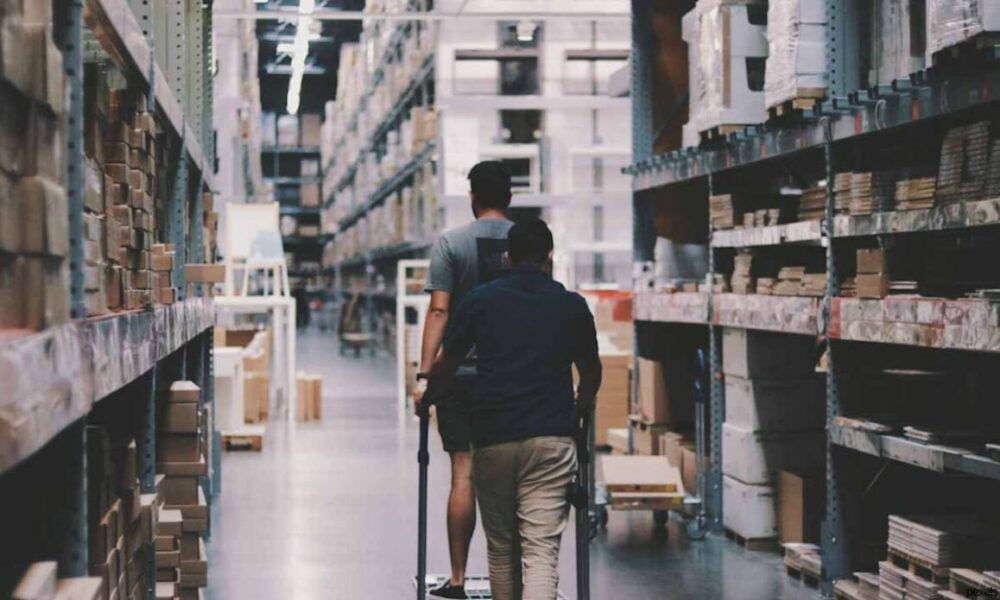Management
5 Steps to Optimizing Warehouse & Factory Communications

Logistics networks, like warehouses and factories, rely on efficient communication and a steady workflow. Without the right tools, however, this can be difficult to achieve. Smooth communication is essential mainly where workers often deal with large-scale projects, hazardous/high-risk work, and various distribution channels.
Managers can optimize communication within their warehouses and factories through the use of various tools and techniques, some advanced and some pragmatic. One thing is for sure. However, bettered communication is sure to increase your factory’s output and overall productivity levels.
Ditch cellphones
According to a 2014 survey by Motorola, cell phones are the primary form of communication in warehouses and plants. However, they’re not necessarily the most reliable. Workers cite various issues with cellphones, including coverage loss, lack of immediacy, limited safety features, and more.
Instead, Motorola and other experts are recommending the use of two-way radios. Unlike cellphones, they don’t require a cellular network to connect with others. They also allow direct and immediate contact with the recipient.
Survey respondents lauded two-way radios as a primary form of communication in these environments for producing the following results:
- Quick & efficient resolution of problems (60%)
- More effective collaboration & coordination (50%)
- Increased workforce productivity (49%)
- Improved worker safety & emergency preparedness (44%)
- Decreased unplanned downtime (32%)
The emergency features on two-way radios are perhaps of the utmost appeal in these high-risk work environments, as they often include the following three programs.
- Man Down: A built-in sensor detects when the radio is in a horizontal position, suggesting the worker has collapsed, and sending a signal across the channel.
- Lone Worker: When a worker has not interacted with the radio for a while, it will send a reminder signal to ensure their safety. If no response, it will alert the radio operator.
- Emergency Button: If a worker is in immediate danger, they can press one button to sound an alarm across the channel indicating trouble
Establish hand signals
Warehouses and factories can be loud environments with tons of heavy machinery, making verbal communication especially difficult. It behoves workers to develop hand signals for the most common situations they find themselves in.
These hand signals should cover directions for machinery operators, ways to alert others of impending emergencies, and indications to stop/begin work. In fact, there are a number of OSHA-recommended hand signals that warehouse and factory workers should definitely acquaint themselves with.
This tactic is beneficial if you have employees with language barriers or hearing impairments. Make sure to agree on a specific set of standardized hand signals for your company and include them in employee handbooks to ensure all employees communicate using the same hand signals.
Create a clear chain-of-command
When employees don’t understand the hierarchy within a company, it can be challenging to bring specific issues to management’s concern. A transparent company structure with a stable communication protocol helps workers feel more comfortable.
If workers know who to report to, they’ll be more inclined to say issues, discuss ideas, and raise concerns. To reinforce the concept of a chain-of-command, encourage more face-to-face communication, starting with daily department-wide meetings at the beginning of the workday.
Take advantage of cloud-based software
Taking inventory and establishing a workflow are two of the main tasks associated with warehouses. With output, distribution, and stock auditing being such main factors of these jobs, cloud-based software can be absolutely essential.
Electronic point-of-sale systems can be installed on portable tablets. This action allows all workers to assess the stock, i.e. where it is headed, when it is being picked up when it is time to order more, and what the sales data looks like. This information is universally shared among all employees.
Cloud-driven systems like these also lend a sense of accountability. Any changes an employee makes to a distribution calendar or stock data is labelled with the employee’s name and a timestamp. That way, errors and success are more easily assessed, and their sources more easily located.
It also leaves less room for a telephone-style error, where information distributed down a long chain eventually becomes muddled. For warehouses and factories with a more specific workflow style, custom cloud-based solutions are available. A cloud-based system can be built from the bottom to reflect that particular factory’s preferred metrics and processes.
Incorporate wearables
Turn two-way radios and other devices into wearables through the use of wristbands and belt clips. Wearables don’t only refer to radios, however. More and more warehouses are equipping managers with smart watches for easy visual cues, such as reminders or text messages.
Most importantly, wearables can come as GPS devices, making it easy to locate workers on the factory floor. This is useful in an emergency and when you want to keep employees within a particular sector. The biggest issue most warehouses face is the vast distances employees have to travel within the warehouse to retrieve different products.
By assigning tasks to employees based on their existing location, managers will heighten productivity and overall speed. In fact, a 2018 MHI study found that 72% of warehouse facilities plan to adopt wearables in the next six years.
As technology progresses, it may seem there are more and more techniques to establish clear-cut communication within your factory or warehouse. However, it still ultimately comes down to the people behind these techniques. No technology can take the place of transparent and straightforward messaging and the discipline to implement it.









